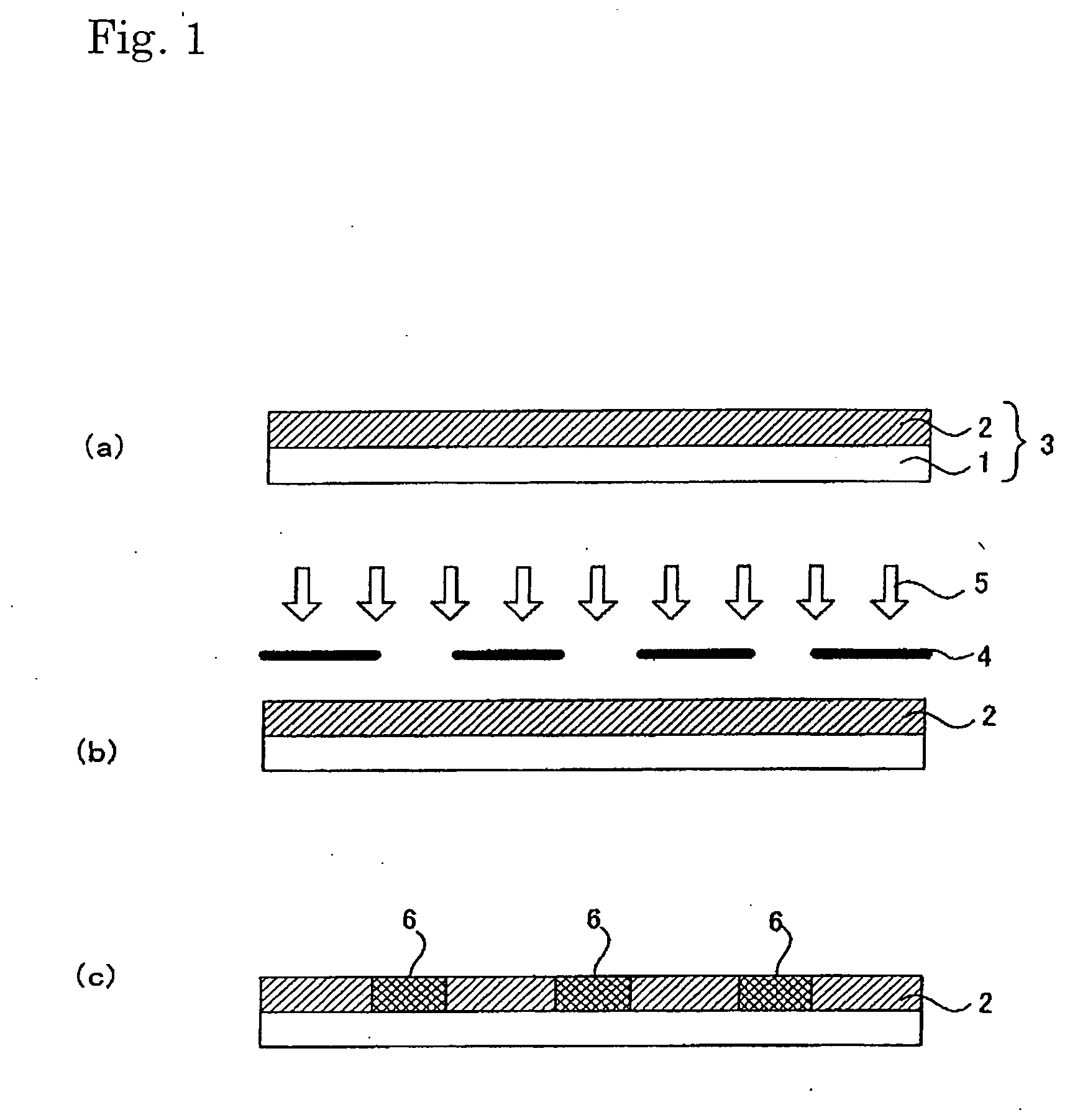Method of constructing artificial cell tissue and base material therefor
- Summary
- Abstract
- Description
- Claims
- Application Information
AI Technical Summary
Benefits of technology
Problems solved by technology
Method used
Image
Examples
example 1
[0311] 1.5 g of fluoroalkyl silane TSL8233 (GE Toshiba Silicones), 5.0 g of tetramethoxysilane TSL8114 (GE Toshiba Silicones), and 2.4 g of 5.0×10−3N HCl were mixed for 12 hours and then diluted 10-fold with isopropyl alcohol.
[0312] Next, 2.0 g of the solution was applied to a 10 cm×10 cm soda glass substrate using a spin coater at 1000 rpm for 5 seconds. The substrate was dried at 150° C. for 10 minutes.
[0313] Next, 3.0 g a titanium oxide sol solution (ISHIHARA SANGYO KAISHA, LTD. STK-03) diluted 3-fold with isopropyl alcohol was used as a composition for a photocatalyst-comprising layer.
[0314] The above composition for a photocatalyst-comprising layer was applied to the patterned surface (on which line portions each having a width of 60 μm and space portions each having a width of 300 μm had been arranged alternately) of a line & space negative photomask (quartz) using a spin coater at 700 rpm for 3 seconds, followed by 10 minutes of drying treatment at 150° C. Thus, a photomas...
example 2
[0320] As cells to be cultured, bovine carotid-derived vascular endothelial cells (Onodera M, Morita I, Mano Y, Murota S: Differential Effects of Nitric Oxide on the Activity of Prostaglandin Endoperoxide h Synthase-1 and-2 in Vascular Endothelial Cells, Prostag Leukotress 62: 161-167, 2000) of 10th to 17th generations obtained by successive culture were used.
[0321] Bovine carotid-derived vascular endothelial cells that had reached confluence in a 10 cm dish were removed by 0.05% trypsin-EDTA treatment. The number of cells was counted using a Coulter counter™ ZM and then the concentration was adjusted to 106 cells / ml. The cell array substrate (exposure time: 360 seconds) prepared in Example 1 was sterilized with an autoclave. The above endothelial cells were inoculated at 106 cells / 5 ml per well on the culture dish (Heraeus Quadriprem™, 76 mm×26 mm, and 1976 mm2) on which the cell array substrate had been placed. The cells were incubated for 24 hours using a CO2 incubator.
[0322] 0...
example 3
[0324] 10 g of a fluorine coating agent XC98-B2742 (GE Toshiba Silicones) was diluted 10-fold with isopropyl alcohol. 5 g of 1,3-butanediol was further added as a solvent with a high boiling point and then the solution was stirred for 5 minutes.
[0325] A polyester film 150-T60 (Lumilar, Toray Industries, Inc.) having a thickness of 150 μm, which had been cut to A4 size, was spin-coated with the solution. Subsequently, the film was heated in a clean oven at 130° C. for 10 minutes, washed with water, and then dried at 90° C. for 3 minutes.
[0326] In the meantime, on a negative photomask (quartz), line portions (opening) each having a width of 60 μm and space portions (shielding portions) each having a width of 300 μm were arranged alternately. Line portions (openings) each having a width of 60 μm orthogonally crossing the line & space pattern were formed at intervals of 2.5 cm. In a manner similar to that of Example 1, the photomask was coated with a photocatalyst layer. Thus, a photo...
PUM
 Login to View More
Login to View More Abstract
Description
Claims
Application Information
 Login to View More
Login to View More - R&D
- Intellectual Property
- Life Sciences
- Materials
- Tech Scout
- Unparalleled Data Quality
- Higher Quality Content
- 60% Fewer Hallucinations
Browse by: Latest US Patents, China's latest patents, Technical Efficacy Thesaurus, Application Domain, Technology Topic, Popular Technical Reports.
© 2025 PatSnap. All rights reserved.Legal|Privacy policy|Modern Slavery Act Transparency Statement|Sitemap|About US| Contact US: help@patsnap.com



